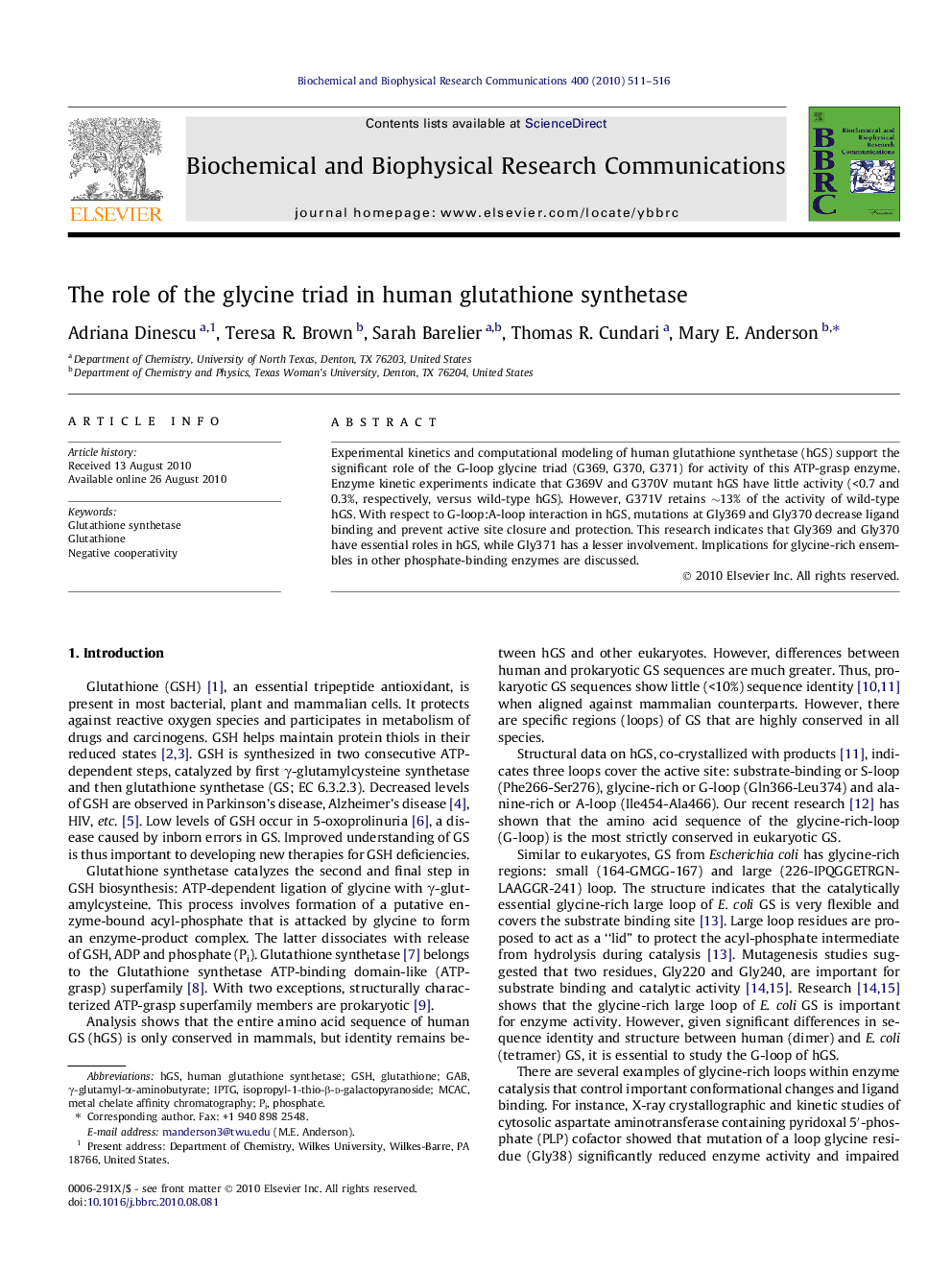| Article ID | Journal | Published Year | Pages | File Type |
|---|---|---|---|---|
| 1931344 | Biochemical and Biophysical Research Communications | 2010 | 6 Pages |
Experimental kinetics and computational modeling of human glutathione synthetase (hGS) support the significant role of the G-loop glycine triad (G369, G370, G371) for activity of this ATP-grasp enzyme. Enzyme kinetic experiments indicate that G369V and G370V mutant hGS have little activity (<0.7 and 0.3%, respectively, versus wild-type hGS). However, G371V retains ∼13% of the activity of wild-type hGS. With respect to G-loop:A-loop interaction in hGS, mutations at Gly369 and Gly370 decrease ligand binding and prevent active site closure and protection. This research indicates that Gly369 and Gly370 have essential roles in hGS, while Gly371 has a lesser involvement. Implications for glycine-rich ensembles in other phosphate-binding enzymes are discussed.
Research highlights► G-loop glycine triad mutations greatly reduce the activity of human glutathione synthetase. ► Mutations to glycine triad residues decrease ligand binding and prevent active site closure. ► G-loop glycines Gly369 and Gly370 have essential roles in hGS, while Gly371 has lesser involvement.
